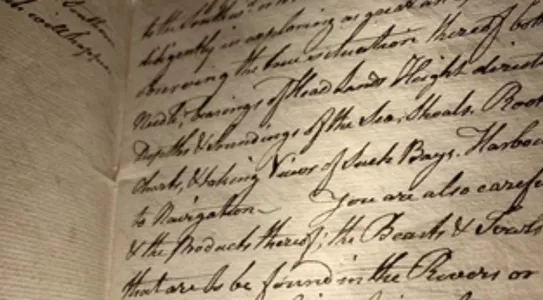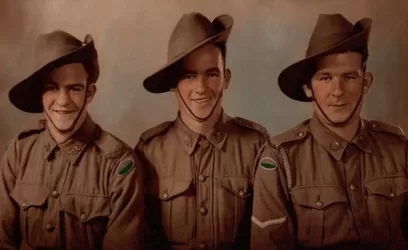The wreck of the Montevideo Maru, one of the worst international maritime disasters in history, has been located at a depth of more than 4,000 metres off the coast of the Philippines – 80 years after it was sunk by an American submarine during World War II.
The location of the Japanese transport ship has been an enduring mystery since it was torpedoed on July 1, 1942 by the USS Sturgeon. Unbeknown to the submarine, the Montevideo Maru was carrying prisoners of war and civilians who had been captured in the fall of Rabaul in Papua New Guinea a few months earlier.
Approximately 1060 prisoners, both military and civilian, were lost. An estimated 979 Australians perished in the disaster, the worst in Australia’s maritime history. Onboard were 33 crew from Norweigen freighter the Herstein, who died together with 20 Japanese guards and crew.
The tragedy impacted at least 14 countries, including: Australia, Denmark, England, Estonia, Finland, Holland, Japan, Ireland, New Zealand, Norway, Scotland, Solomon Islands, Sweden and the United States.
Amongst the names of Australians killed were:
Peter Garrett’s grandfather – T.V. Garrett, aged 35
Kim Beazley’s uncle – Sydney Uwin Beazley, aged 32
The youngest on board was a 15 year old Ivor Gascoigne
Chair of the Australian War Memorial Kim Beazley’s uncle, Syd Beazley, was among those lost in the tragedy. Mr Beazley’s uncle was a resident of Rabaul in New Guinea’s East New Britain province, and was on board the ship.
“Finding the site of Australia’s most devastating loss at sea will help heal Australia’s collective memory for generations”
“This has solved a Second World War mystery and my family’s history.”
“This discovery is connected to an enormous Australian tragedy, both from massacres on land and the huge loss of life at sea”
“This is a monumental moment in history and for the families who have agonised and grieved about what happened to their loved ones on this ill-fated ship.”
Chair of the Australian War Memorial Kim Beazley said.
This is story of three Turner brothers that died together on the Montevideo Maru, but is also about the family that waited in vain for their return especially Jessie – the boy’s mum.
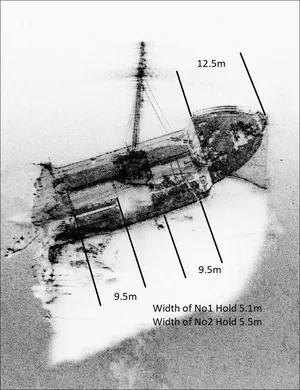
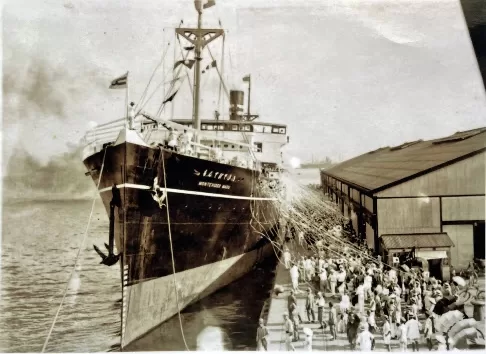

(Left) Montevideo Maru wreck bow section; (Right) The Montevideo Maru
The wreck was discovered on an extraordinary mission put together by Australia’s Silentworld Foundation, which is dedicated to maritime archaeology and history, and Dutch company Fugro, deep-sea survey specialists, with support from Australia’s Department of Defence.
The search commenced on April 6 in the South China Sea, 110km north-west of Luzon. After just 12 days (April 18), a positive sighting was recorded using state-of-the-art technology, including an Autonomous Underwater Vehicle (AUV) with in-built sonar.
It took a number of days to verify the wreck using expert analysis from the project team, comprising maritime archaeologists, conservators, operations and research specialists, and ex-naval officers.
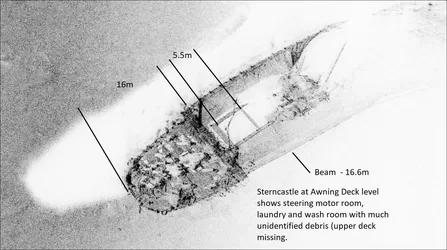



(Left) Montevideo Maru wreck stern section; (Right) 1st Independent Company
It has taken nearly five years of planning by Silentworld and 20 years of dedication from the Montevideo Maru Society to assemble the expedition team, led by Australian businessman, maritime history philanthropist and explorer John Mullen, the director of Silentworld.
“The discovery of the Montevideo Maru closes a terrible chapter in international military and maritime history,” Mr Mullen said.
“Families waited years for news of their missing loved ones, before learning of the tragic outcome of the sinking. Some never fully came to accept that their loved ones were among the victims. Today, by finding the vessel, we hope to bring closure to the many families devastated by this terrible disaster.
“I would like to express my gratitude to all of the dedicated Silentworld team involved in this expedition, to the outstanding Fugro crew and technical team on board the Fugro Equator, and to the Australian Department of Defence for their unwavering support.
“I am proud to be the citizen of a country that never forgets or stops looking for those lost in the course of duty, no matter how many years may pass.”
The wreckage of the Montevideo Maru, sitting at a deeper depth than the Titanic, will not be disturbed. No artefacts or human remains will be removed. The site will be recorded for research purposes out of respect for all the families of those onboard who were lost.
Chair of the Australian War Memorial Kim Beazley says the discovery of SS Montevideo Maru in the South China Sea almost 81 years after the tragedy is a “monumental moment in war history”.
More than 1,000 Australian soldiers and civilians, captured by the Japanese following the fall of Rabul died at sea on 1 July 1942 when the ship was torpedoed by the USS Sturgeon, unaware that it was carrying Allied prisoners.
In 2009 Mr Beazley joined a group of relatives urging the federal government to launch a search for the wreck.
Details of any commemorative events will be provided at the appropriate time.
Descendants of the Montevideo Maru may register their details to be kept informed at https://www.army.gov.au/our-work/unrecovered-war-casualties/register-us
Australian War Memorial Director Matt Anderson said:
“The families on the ship were unaware of their loves ones fate until after the war.”
“According to an account from the handful of surviving Japanese crew, the Australians in the waters sang Auld Lang Syne to their mates still trapped in the ship as it sank beneath the waves.”
“We should take both pride and comfort in the fact we live in a country where we have continued, for 80 years, to find the Montevideo Maru’s final resting place. This will bring some measure of closure to the relatives and, I hope, allow all those who perished, to finally rest in peace.”
Australian War Memorial Director Matt Anderson said
Last year, families of those who died marked the 80th anniversary of the tragedy at the Australian War Memorial.
The Australian War Memorial commemorates the tragedy through a commemorative sculpture and the Memorial’s Roll of Honour.
Silentworld Foundation
John and Jacqui Mullen are the founders and directors of the Silentworld Foundation. John is also Chairman of Telstra and Brambles Ltd, and Chairman of the Australian National Maritime Museum.
The not-for-profit Silentworld Foundation based in Sydney supports and promotes Australasian maritime archaeology, history, culture and heritage.
It also operates a private museum dedicated to understanding our nation’s early maritime history and supports annual expeditions and other ventures seeking a greater understanding of our past.
The discovery of the Montevideo Maru is another high-profile success story. Amongst others, in 2017 Silentworld participated in the finding of HMAS AE1, Australia’s first submarine.
In 2009, the Foundation solved a 180-year mystery by locating the wreck site of HMCS Mermaid, lost on a coral reef off the Queensland coast in 1829.
Website: https://silentworldfoundation.org.au


